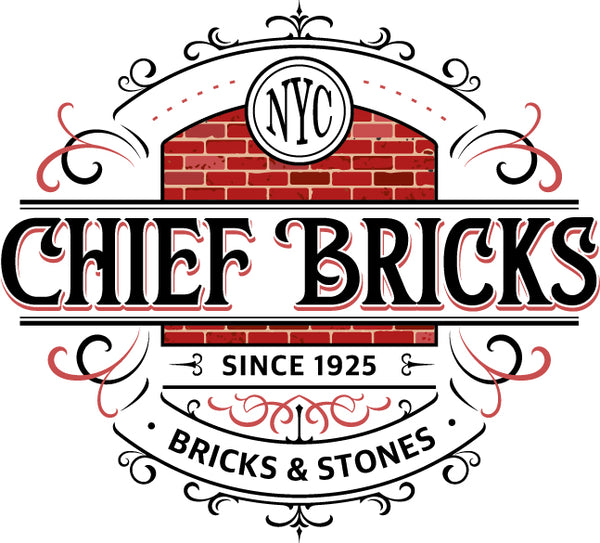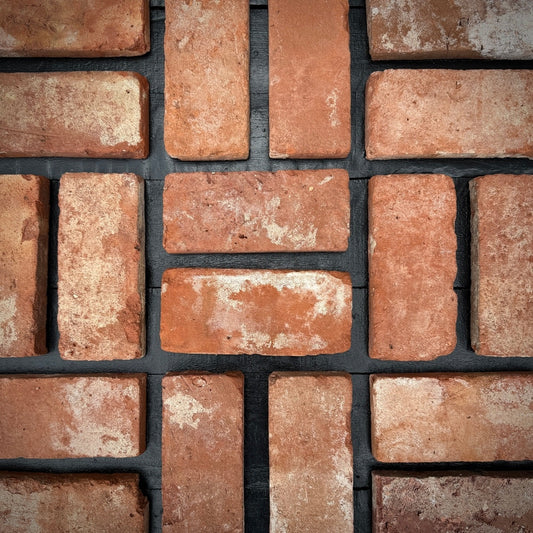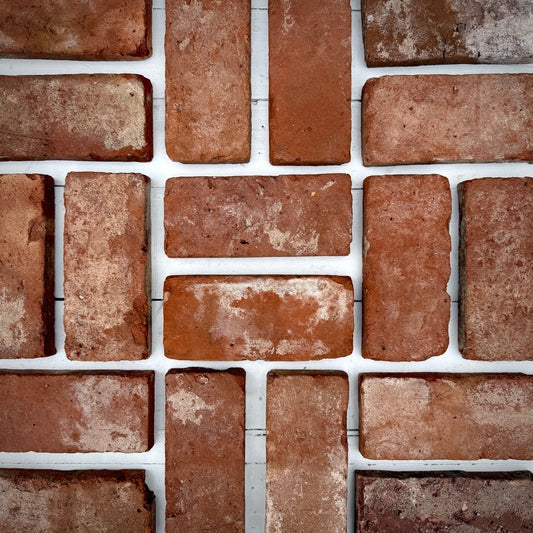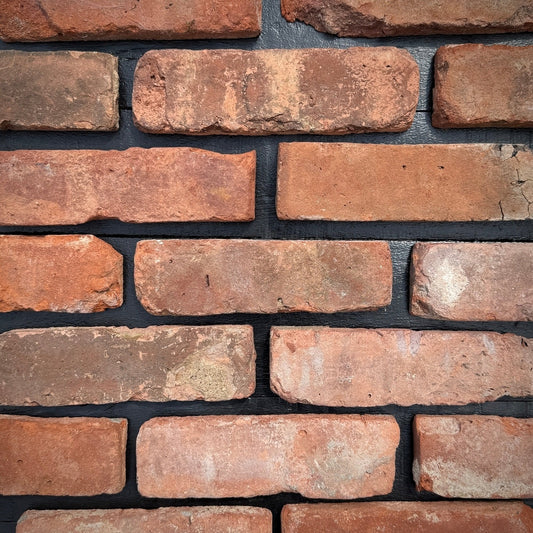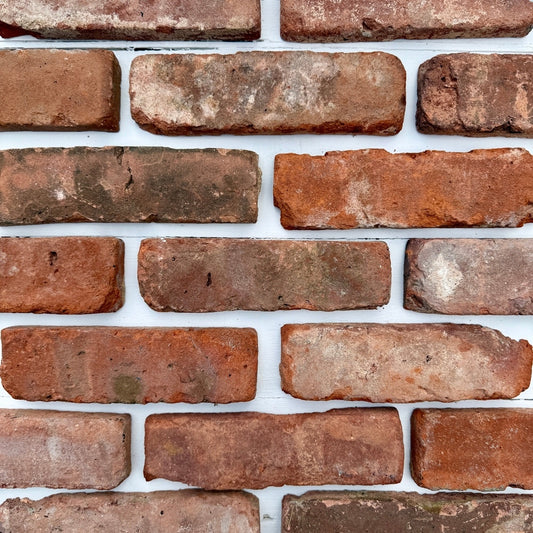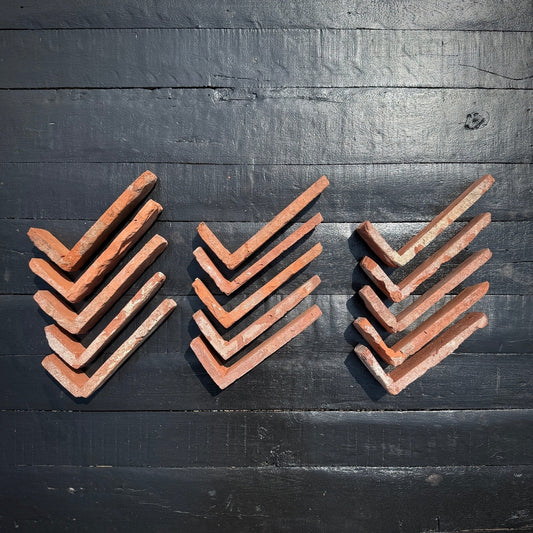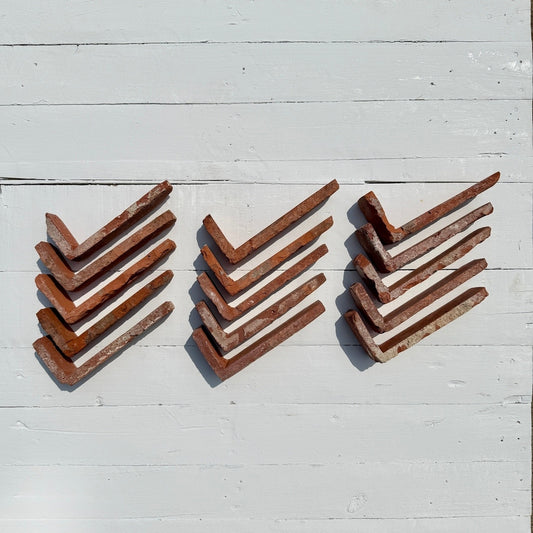You're looking for a floor with soul. Not some sterile, mass-produced material that feels cold and lifeless. You want character, warmth, and a story you can feel under your feet. This is where thin brick floor tiles come in, and they might be exactly what you have been searching for.
Imagine a floor that has already lived a full life. A surface that carries the history of a city within its texture. Using reclaimed thin brick floor tiles is more than a design choice; it is about bringing a piece of the past into your personal space.
Table Of Contents:
- What Exactly Are Reclaimed Thin Brick Tiles?
- Why a Brick Floor Is a Brilliant Idea
- Choosing the Right Thin Brick for Your Project
- Exploring Different Thin Brick Floor Tiles Patterns
- A Simple Guide to Installing Your Brick Floor
- Where to Use Thin Brick Flooring
- Keeping Your Brick Floor Beautiful
- Conclusion
What Exactly Are Reclaimed Thin Brick Tiles?
Think of real, solid bricks from old historic buildings, now picture them carefully sliced into thin profiles. That's what thin brick tiles are. They give you the authentic look and feel of a classic brick floor without the weight and thickness of a full brick, making them a versatile type of brick veneer.
The tiles we know best at Chief Bricks are cut from bricks reclaimed in New York City. Specifically, they come from solid bricks called 'flat, no-frog' bricks. These were the workhorses of historic construction all over the five boroughs for more than a century and are much different from modern face brick.
The result is something that simply can't be manufactured. It is a weathered, perfectly imperfect finish. Each tile holds the story of its past life, showing off the patina and color shifts that only decades of city life can create.
Why a Brick Floor Is a Brilliant Idea
You have a lot of flooring options. So why should you go with brick? The reasons go far beyond just looks, making it a choice that pays off for years.
Bring History Home
Each tile is a piece of American history. These are not copies or replicas made to look old. They are genuinely old, salvaged from buildings constructed over 100 years ago, giving you a real antique finish.
No two tiles are ever identical, which means your floor has a story all its own. This is true brick authenticity. You are installing a surface with a genuine past.
A Look That Never Fades
The style of brick is truly timeless. Its worn texture and rich palette of brick colors feel both rustic and incredibly modern. You'll see shades from deep reds to soft oranges, and even some muted browns, grays, and clear tones.
This natural variation adds incredible depth to a room. This aesthetic works almost anywhere, from a cozy farmhouse kitchen to a sleek industrial loft. It's a look that feels grounded and permanent, which is why so many interior designers recommend it for both floors brick and accent walls.
An Eco-Friendly Choice
Choosing reclaimed materials is one of the best things you can do for the planet. Using old bricks keeps them out of landfills and reduces the environmental impact of new production. It also avoids the huge amount of energy needed to fire up a kiln and make new materials from raw materials.
The Environmental Protection Agency highlights that reusing building materials is a key part of sustainable construction. You are not just getting a beautiful brick floor. You are making a sustainable choice with a conscience.
| Feature | Reclaimed Thin Brick | New Thin Brick |
|---|---|---|
| Character | Authentic weathering, color variations, and patina from real antique brick. | Uniform color and texture; often artificially aged to mimic a real brick. |
| Sustainability | Excellent. Diverts waste from landfills and lowers environmental impact. | Poor. High energy use in manufacturing new materials. |
| Color | Natural, wide range of brick colors from years of exposure. | Consistent, controlled color from dyes in the manufacturing process. |
| Durability | Proven for over a century; very dense and hard fired. | Durable, but may not have the same density as actual brick. |
Built to Last Generations
There's a reason brick has been used for streets and floors for hundreds of years; it is an incredibly tough material. This type of tile flooring is highly durable. Once your brick floor is sealed, it will stand up to almost anything life throws at it.
This makes it the perfect brick for high-traffic areas. Think mudrooms, kitchens, entryways, and hallways. You will not have to worry about scratches or wear from daily use, and its natural texture provides good slip resistance.
Choosing the Right Thin Brick for Your Project
Before starting your project, selecting the right tiles is an important step. The variations in color, texture, and size will define the final look of your space. Taking time to browse options will help you find the perfect match for your vision.
Color and Texture
Reclaimed bricks offer a wide spectrum of colors. These are not uniform, which is a major part of their charm. Consider the overall color palette of your room and choose a brick blend that complements it.
Texture is another key element. Some bricks have a rougher, more weathered surface, while others are smoother.
Size and Shape
Most thin brick tiles come in a standard brick size, but there can be slight variations due to their reclaimed nature. Check the dimensions, often listed as size, before ordering.
Exploring Different Thin Brick Floor Tiles Patterns
How you lay your thin brick floor tiles dramatically changes the room's feel. Your pattern choice is a huge part of the final design. It is your chance to put a personal stamp on the space.
Before you start the tile installation, it's a good idea to lay out the tiles without any mortar. This is called a dry layout. It lets you see the pattern and adjust the tile placement for the best color blend and flow.
Classic Running Bond
This is the most common and traditional brick pattern, often seen on an exposed brick wall. Each row is offset from the one below it, usually by half the length of a brick. It creates a simple, linear look that feels sturdy and familiar, and it's great for making a room feel longer or wider.
Elegant Herringbone
The herringbone pattern is stunning. Bricks are laid in zig-zag lines, creating V-shapes that point across the floor. This dynamic pattern adds a sense of movement and sophistication.
It works beautifully in both large, open spaces and smaller rooms where you want to make a statement. There is a reason this centuries-old pattern remains popular in architecture, as noted by building experts. It's a classic choice for brick floors.
Intricate Basketweave
For a more textured, old-world look, consider the basketweave pattern. Tiles are arranged in small squares to create the illusion of woven blocks. It is a visually interesting pattern that adds a lot of charm and works well in spaces like patios, sunrooms, or wine cellars.
A Simple Guide to Installing Your Brick Floor
Installing a thin brick floor is a project you can tackle yourself. It is similar to laying other types of tile, like ceramic tile. But there are a few important steps to follow for the best results.
1. Get the Subfloor Ready
Your foundation is everything. The subfloor needs to be clean, totally level, and strong before starting on a clean job site. Thin brick tiles are heavier than other wall tiles, so the floor underneath has to be able to handle the weight.
A concrete slab is a great base. If you are working with a wood subfloor, installing a layer of cement backer board is a good idea. A backer board provides a stable surface for tile and prevents flexing that can lead to cracked grout.
2. Apply the Mortar
You'll use a high-strength thin-set mortar. Spread it on the subfloor with a notched trowel. The notches help create ridges in the mortar, which allows air to escape and makes for a stronger bond.
If you're installing the floor in a place that gets wet, like a mudroom or for some exterior applications, use a polymer-modified mortar. It offers extra bonding strength and water resistance. Just apply enough mortar to lay a few tiles at a time so it does not dry out.
3. Space and Grout the Tiles
The space between the tiles, or grout joint, is part of the look. For an authentic feel, leave a space of about 3/8 to 1/2 an inch. Tile spacers can help you keep this consistent across all the bricks reclaimed for your project.
After the tiles are set, it is time to grout. You can use traditional sanded grout or a pointing mortar mix. A grout bag works like a cake decorating bag and lets you squeeze the grout directly into the joints, which keeps the face of the brick clean.
4. Seal Everything In
This is the final, crucial step. After the grout has fully cured, you need to seal the floor. A good sealer protects the porous brick from stains, moisture, and daily grime.
Use a penetrating sealer for a natural finish. It soaks into the brick and grout without creating a shiny film on top. If you want to deepen the colors and bring out the character of the beautiful brick, choose an enhancing sealer instead.
Read our article on Brick Sealing Basics.
Where to Use Thin Brick Flooring
The durability and timeless appeal of thin brick make it suitable for many areas of the home. Its ability to handle heavy foot traffic and resist wear makes it a practical choice. It offers the perfect balance between rustic charm and functional strength.
In the kitchen, a brick floor can create a warm, inviting atmosphere that stands up to spills and dropped utensils. You can even coordinate your floor with a matching kitchen backsplash for a unified design. Many homeowners use thin brick tiles, a type of wall veneer, for kitchen backsplashes to complement their floors.
Mudrooms and entryways are ideal spots for brick. They can handle the dirt, mud, and water that get tracked in from outside. In basements or wine cellars, brick adds an authentic, rustic touch that feels both classic and cozy.
Keeping Your Brick Floor Beautiful
Good news. A reclaimed brick floor is pretty low-maintenance. A little regular care and extra care with spills will keep it looking fantastic for decades to come.
Sweep it regularly with a broom. You can also use a vacuum with a brush attachment. This prevents dust and dirt from getting stuck in the brick's natural texture.
For cleaning, just use warm water and a small amount of pH-neutral cleaner. Avoid using any harsh or acidic chemicals like vinegar. Those can damage the sealer and the natural materials of the brick over time.
Depending on how much foot traffic the area gets, you will want to re-seal the floor every two to four years. This is a simple process. It just involves cleaning the floor well and rolling on a new coat of sealer.
Read our article on How To Clean Brick Floors.
Conclusion
A floor is the foundation of a room's design, setting the tone for everything else. Choosing reclaimed thin brick floor tiles gives you a foundation built on history, durability, and unmatched character. These tiles are cut from authentic, antique brick to ensure you get the highest quality finish.
You're not just installing a surface; you're preserving a piece of the past and making it part of your own story. By selecting these thin brick tiles, you are choosing a floor with depth and a rich history. Your home deserves a floor that feels alive, and nothing does that better than these timeless thin brick floor tiles.
